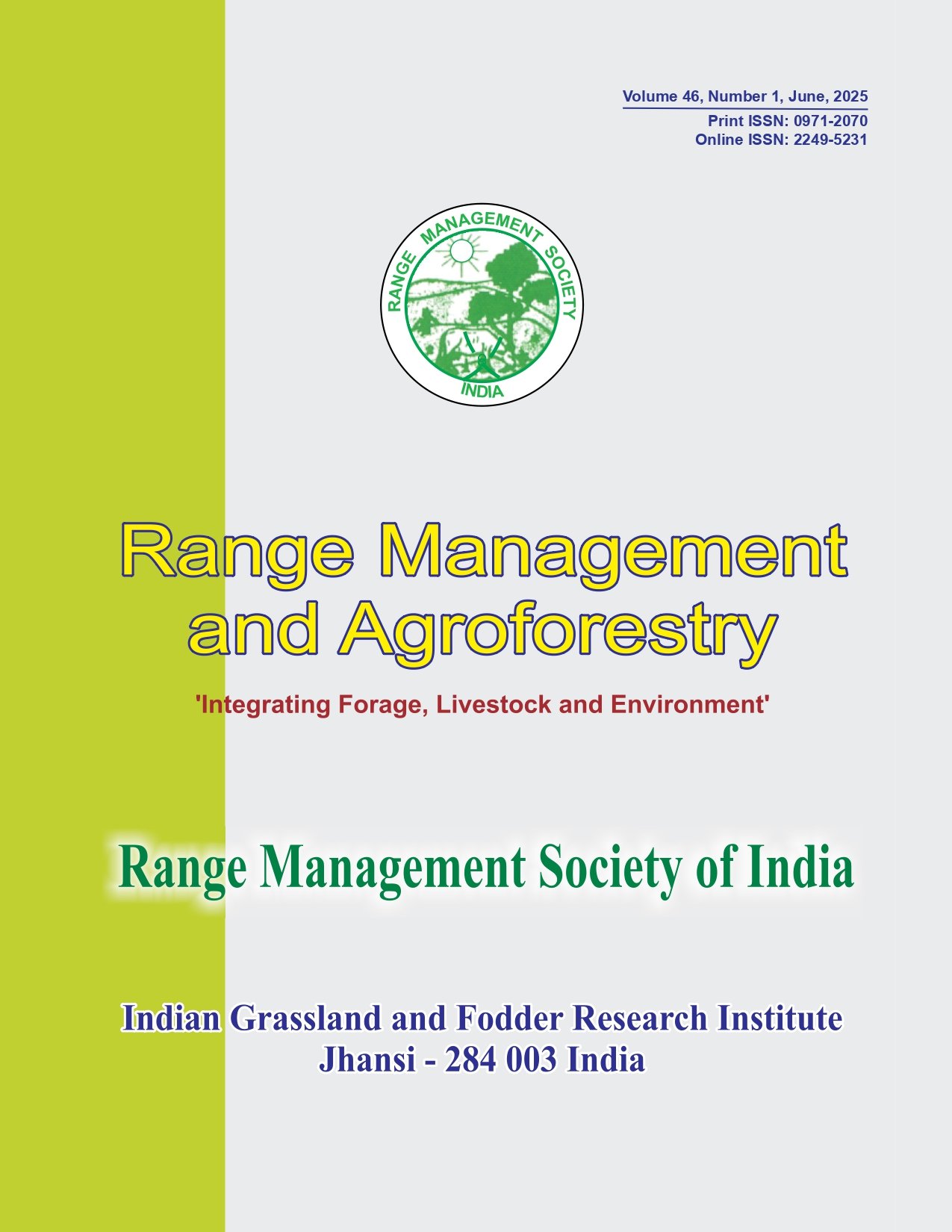Changes in seasonal vegetation and sustenance of tussocky arid rangelands under different grazing pressures
Keywords:
Arid zone, Grassland, Grazing, Lasiurus sindicus, Rainfall, Seasonal vegetationAbstract
Perennial vegetation provides ecological and economic stability to livestock based production systems in the arid regions. But, role of herbaceous annual and seasonal vegetation is poorly understood. In order to understand this, grazing experiments [T1 : Control (no grazing); T2 : Optimum carrying capacity with supplemental feed (6 sheep grazing); T3 : Optimum carrying capacity without supplemental feed (6 sheep grazing); T4 : Double the carrying capacity with supplemental feed (12 sheep grazing) and T5 : Double the carrying capacity without supplemental feed (12 sheep grazing)] were conducted for two consecutive years in Lasiurus sindicus dominated rangelands at Chandan, Jaisalmer. Study revealed that irrespective of supplemental feed, 70-80% of L. sindicus cover declined in paddock with double the carrying capacity (T4 and T5 ). Further, the preferential consumption of seasonal and low perennials such as Ochthochloa compressa and annual Cenchrus biflorus in monsoon and post-monsoon helped to defray the consumption of perennials and inter-alia prolonged the duration of rangeuse. It was concluded that spatial heterogeneity imparted by seasonal vegetation in an overall matrix of perennial tall grasses and woody perennials need to be managed optimally by grazing management of both seasonals and perennials.




